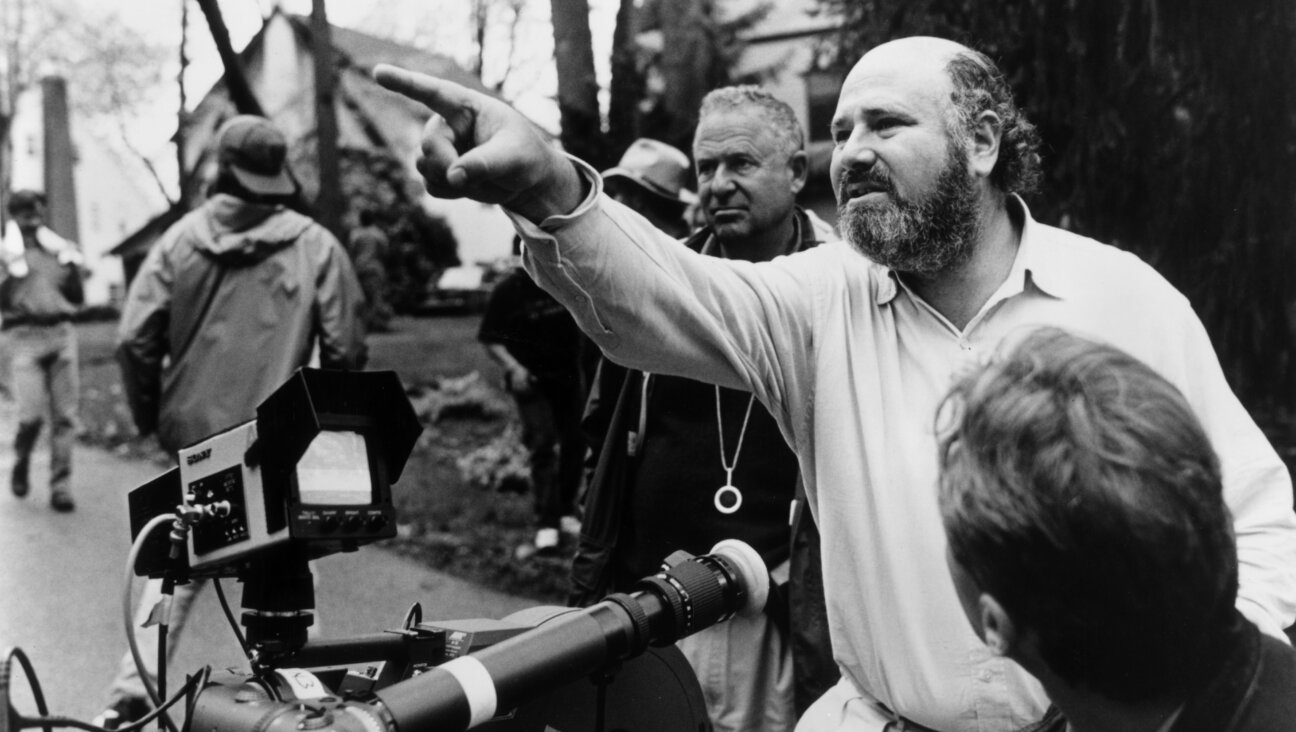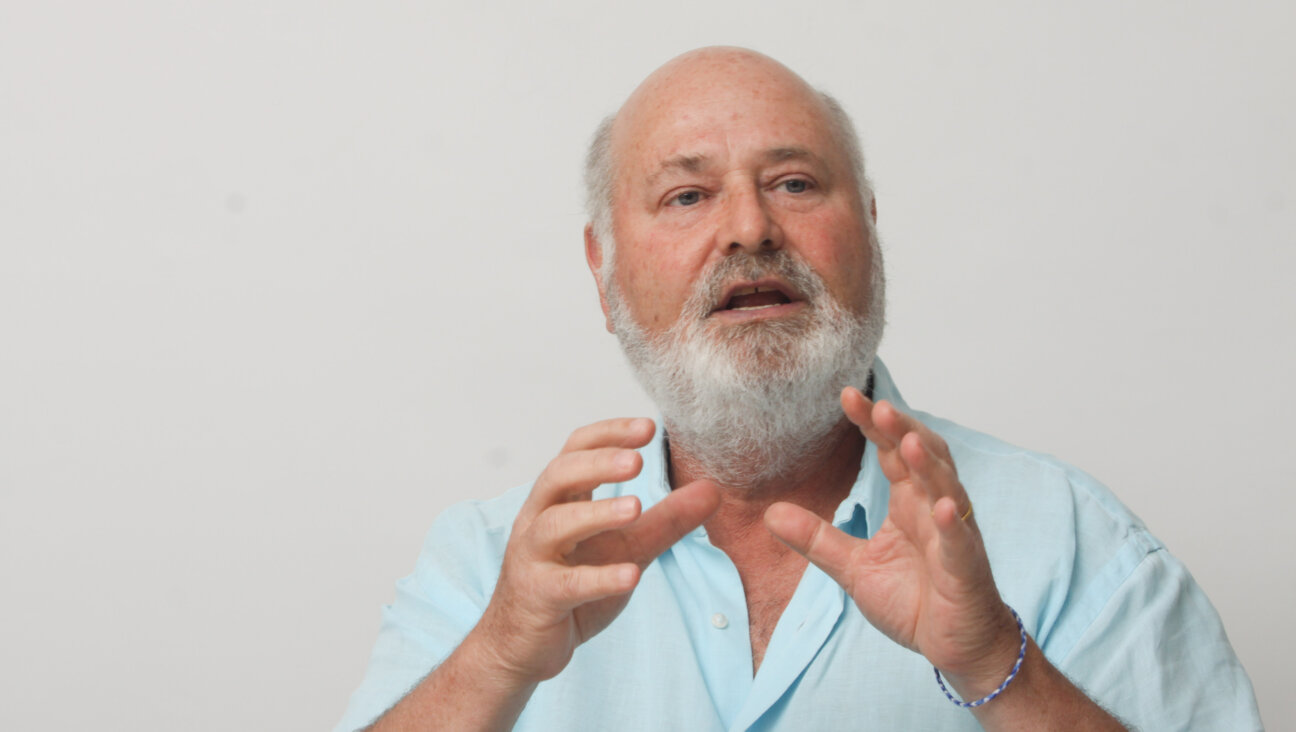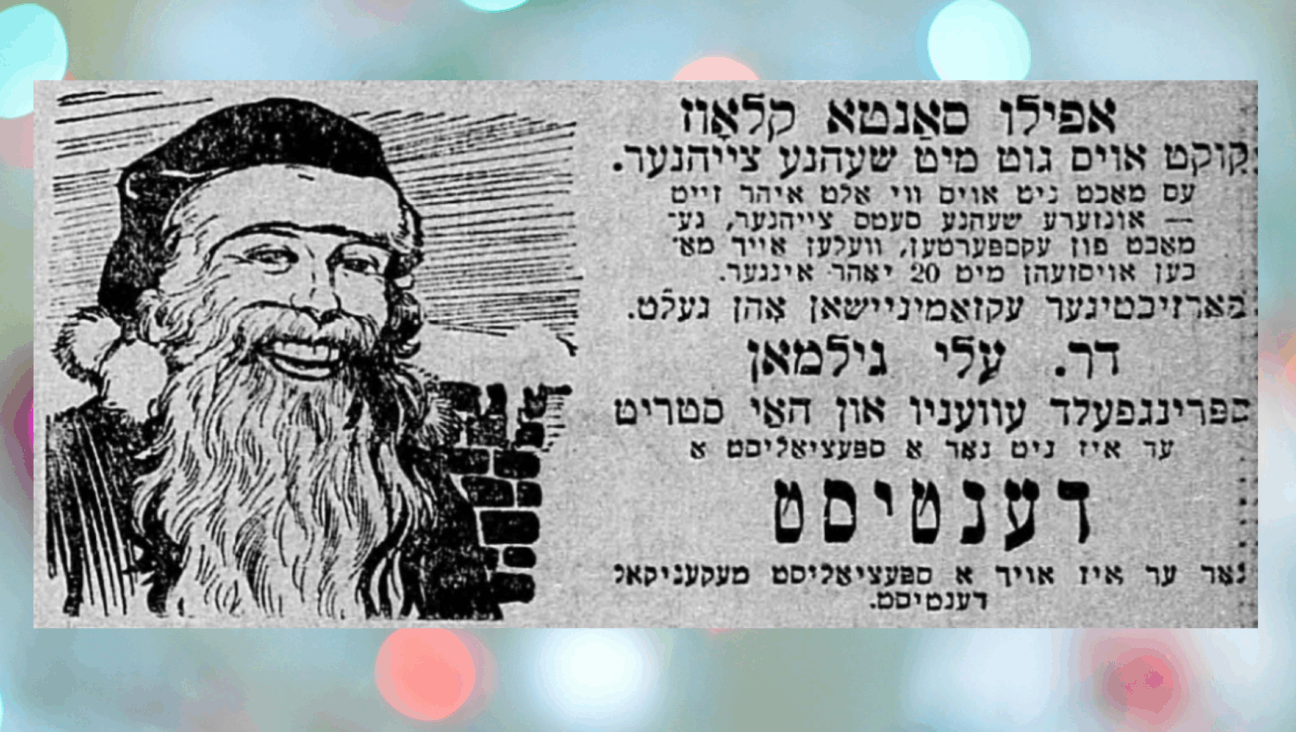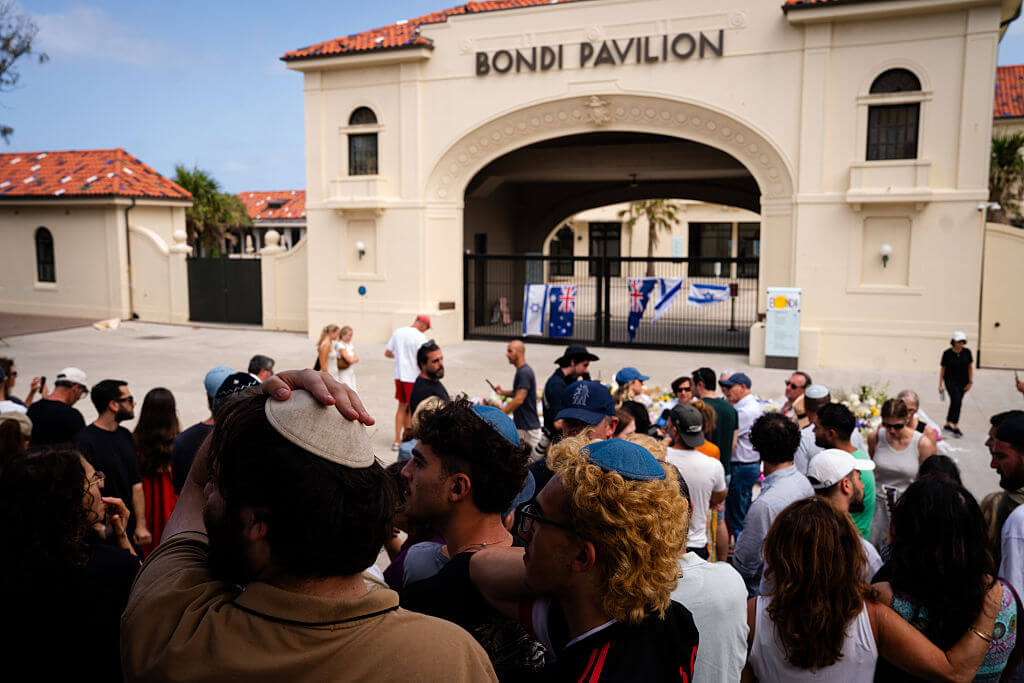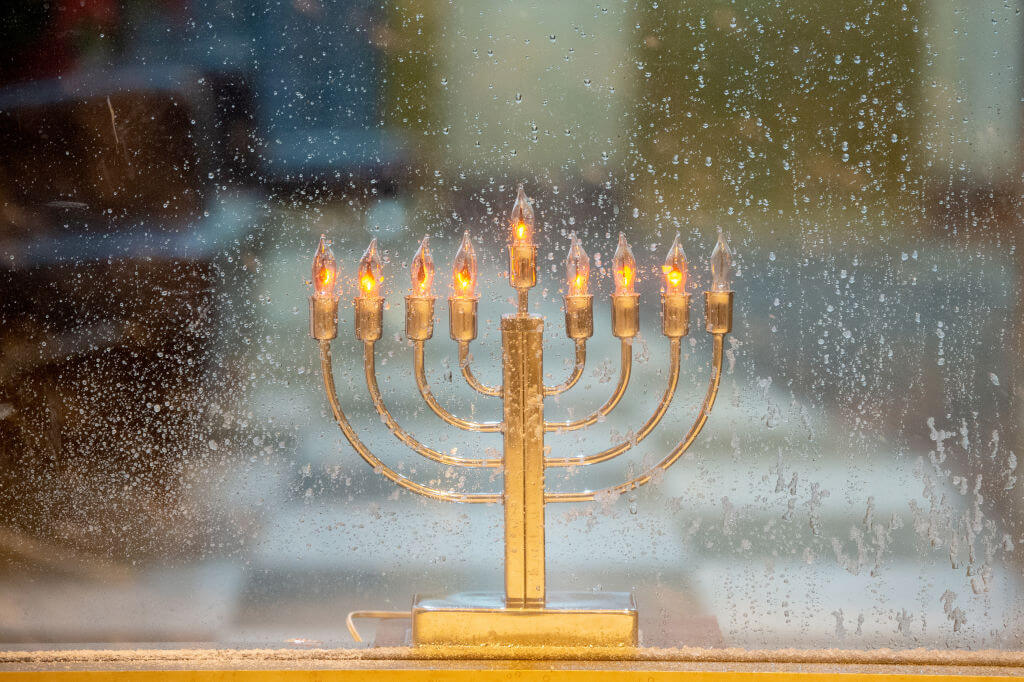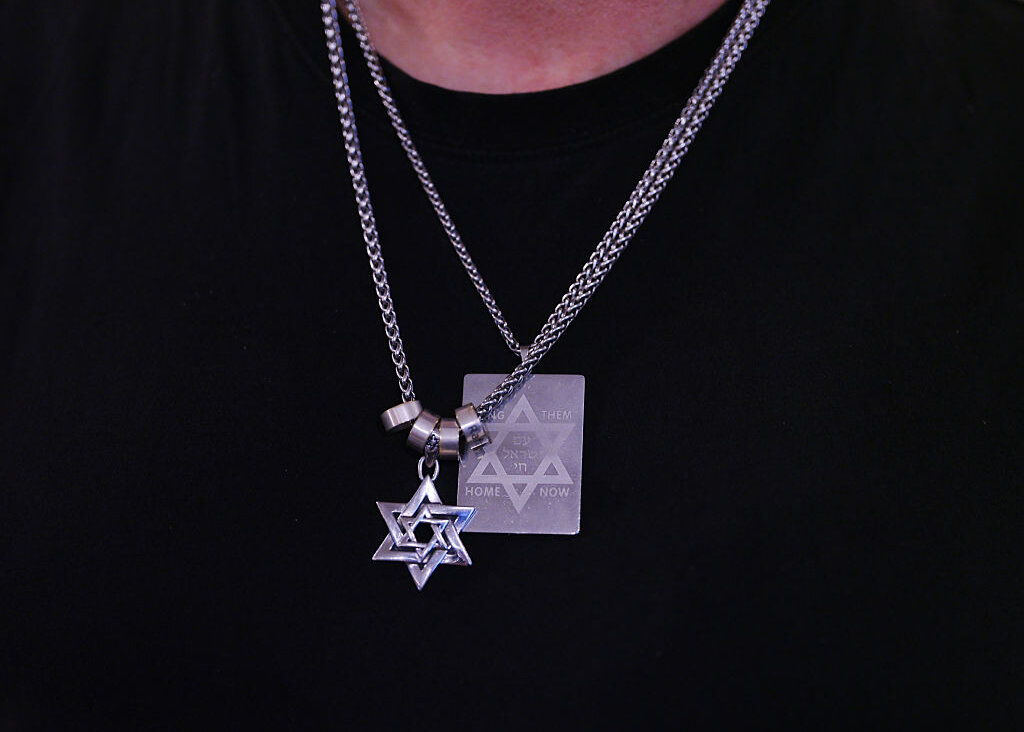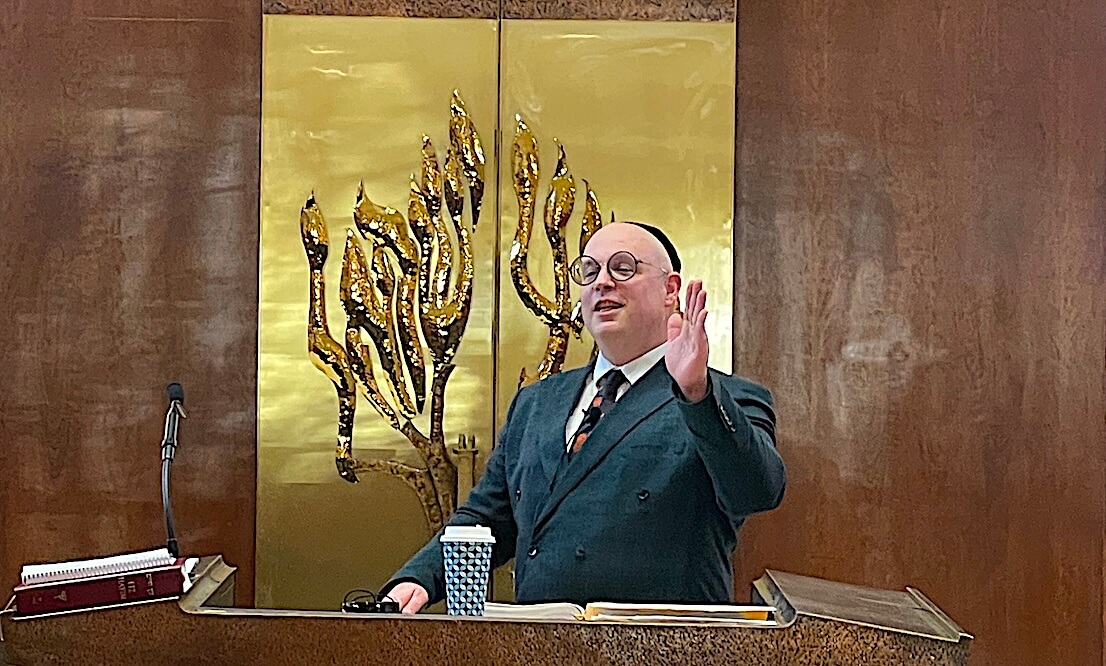How a unique Torah scroll scribed by a woman led to a historic bar mitzvah
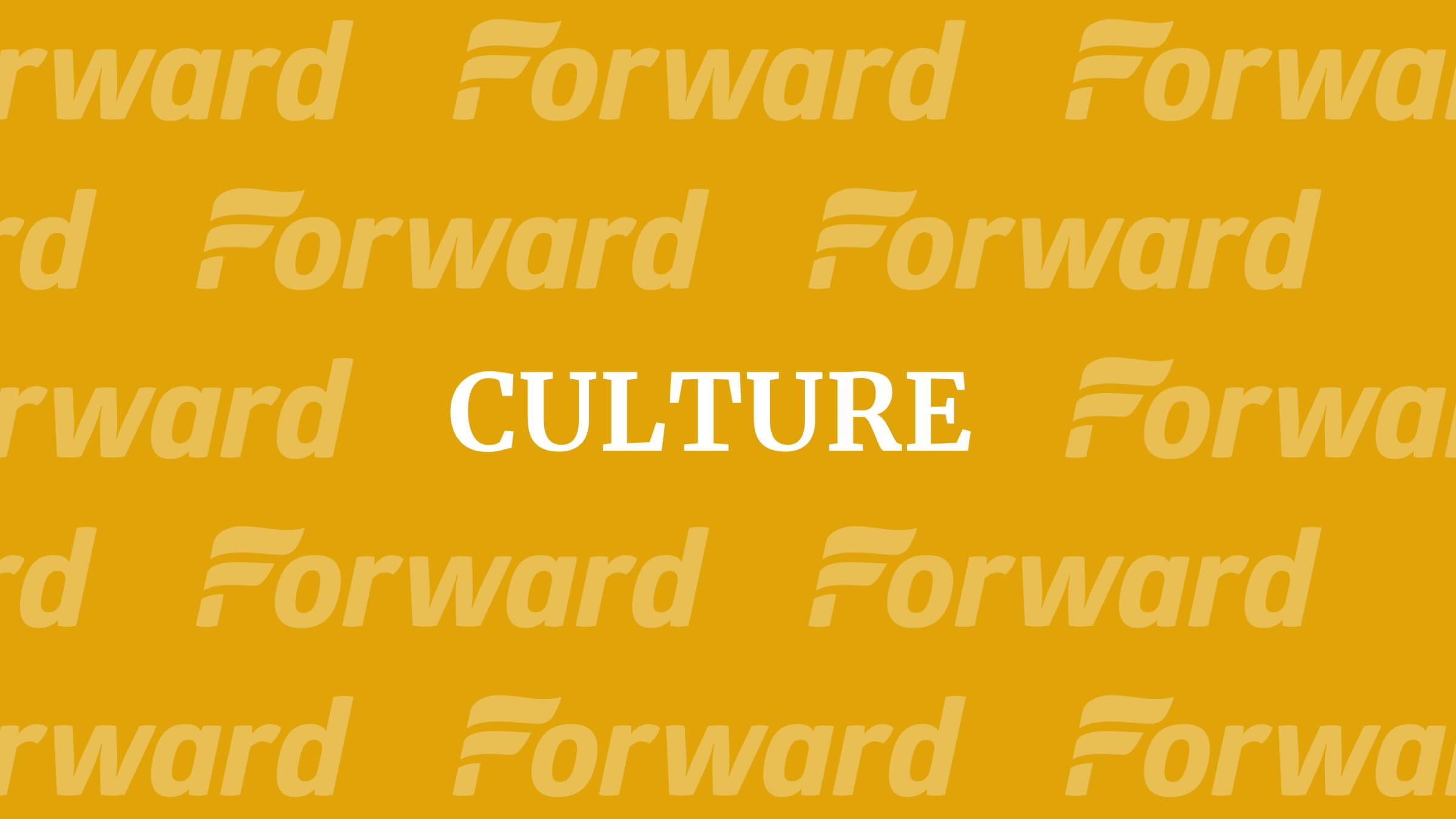
Graphic by Angelie Zaslavsky
When Gavriel Kedem became a bar mitzvah, he was focused on the usual things: chanting the parsha, giving his dvar, the people watching. He wasn’t thinking about it as a historic moment. But it was — Gavriel was chanting from a scroll written by his mother, Shoshana Gugenheim Kedem, the first woman ever to be commissioned as a Torah scribe.
Other attendees, however, were well aware of the gravity and symbolism of the moment. His parents had arranged for the Torah scroll to be brought to Portland, Oregon, where they live, from the congregation in Seattle that commissioned it. The journey of the Torah was conducted with great ceremony — the driver even compiled a special playlist for the scroll during its journey.
Many communities would never read from a Torah written by a woman — the majority opinion in the Talmud considers Torahs written by women to be unfit for use — and the undertaking is so expensive and demanding, since scribes need extensive ritual knowledge and not everyone will even teach the skills to women, that it’s nearly impossible. So when Kadima, a congregation in Seattle, commissioned Gugenheim Kedem to scribe a Torah, it was a historic first.
But for Gavriel, though he said he’s proud of his mom, it was hard for him to come up with much to say on the symbolism of the moment; he was just happy the bar mitzvah went well. “I think for our kids it is normal that this scroll is out there and other scrolls are out there,” his dad, Andrew Kedem, told me. For Kedem, it was a comforting, sweet moment standing on the bimah and watching his son chant lines he could remember his wife scribing — this one before lunch, that one after.
Gavriel’s parsha was “Vayera,” in which God and Abraham bargain over the fate of Sodom and Gomorrah. For his mom, this was deeply symbolic of her own process, over a decade earlier, of writing the very scroll he was chanting from. “My journey was very much also about bargaining — bargaining with God, bargaining with the Jewish community, bargaining with myself,” she said.
During the five years she spent working on the scroll, she struggled with infertility, then conceived and bore Gavriel. “That whole practice of writing was like writing him into our lives,” she said. “I said to [Gavriel] that I really feel that the moment he reads from that scroll, that my work will have come full circle.”

Gavriel and his mom embrace. Image by Nikki Levine
The scroll was a community project; one of Gugenheim Kedem’s conditions, upon accepting the commission, was that any other woman who finished her training while it was still in process would be able to write part of it. This led to a whole community of women scribes, Stam Scribes, who have had to deal with challenges and questions male scribes haven’t had to face. Should they mark their scrolls so congregations that don’t believe that a female-scribed Torah is kosher know not to use it? Is it OK to lie in order to get materials, since shopkeepers might refuse to sell the ritual parchment to a woman, or must the process of creating a holy scroll be free from deception?
And then there were the physical questions — sofers must be ritually pure to scribe, immersing in the mikveh before writing. But before this, no had ever had to deal with questions of menstruation or pregnancy and breastfeeding, and the group of women debated the halachic requirements. “It was an opportunity to make new spiritual protocols,” said Gugenheim Kedem.
In the end, six women on three continents worked on the scroll, which took five years to complete — during which time another woman, Jen Taylor Friedman, got and completed a commission for a Torah.
When the original scroll was finally finished, it was bound together in a community event. But Gugenheim Kedem, who lived in Israel at the time, never saw it in its completed form until she moved to the Pacific Northwest. And she had never read from the completed scroll until the bar mitzvah.
For Gugenheim Kedem, the whole journey has been about ushering a new generation into the world — women who feel like they can become scribes, and children like hers who are used to the idea. Gavriel’s bar mitzvah was a culmination of decades of work.
But the journey isn’t over; Gugenheim Kedem wrote another scroll, this one while pregnant with her now-9-year-old daughter, Hadar. Stay tuned for that bat mitzvah.
Correction: The original version of this article misstated the reason the Talmud prohibits women from being Torah scribes. The Talmud bars women from writing tefillin, and infers from this that they are also forbidden from lettering Torah scrolls.


